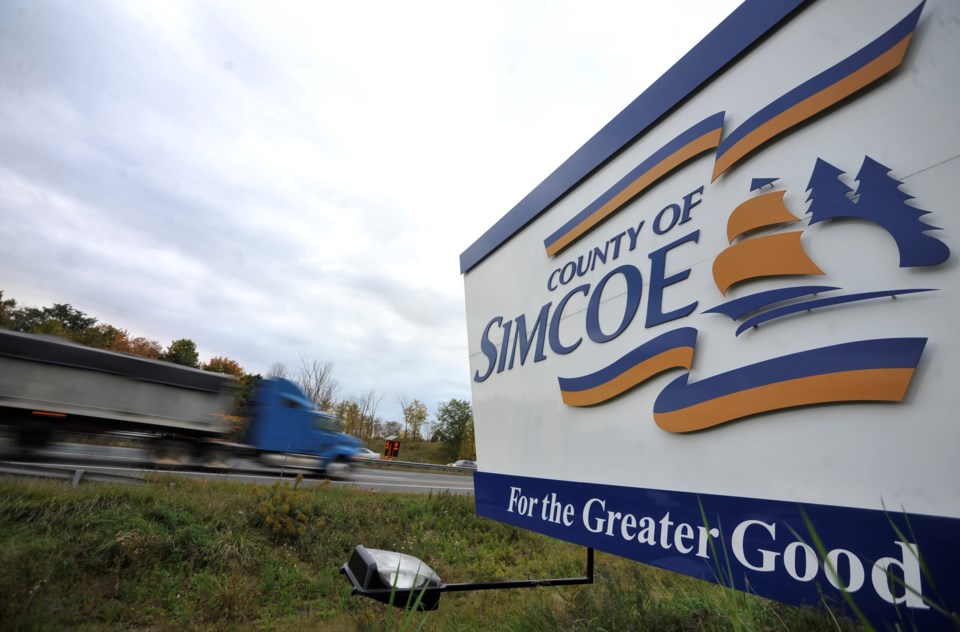County council is hoping to show a united front when it comes to the impending PC regional governance structure review.
At their meeting on Feb. 12, Simcoe County council discussed forming a working group to decide what any potential new county council model should be, although some councillors were at odds over what that working group should look like.
With the special advisors for the Progressive Conservative government planned to visit Simcoe County on Feb. 19, the committee will not be able to meet in time prior to the visit to share concerns or ideas.
“It’s our understanding that there won’t be any reporting done until early summer,” said Simcoe County Chief Administrative Officer Mark Aitken. “It’s also been made clear that the point in contact on Tuesday won’t be the only point in contact.”
“Ideally, based on the discussion that occurred, I can surmise that county council feels it would be probably wise for them to have a common position. Whether they can agree upon that or not, the workshop will determine that, I suppose,” he said.
On Jan. 15, the Province of Ontario announced a review of the regional government model, including the County of Simcoe, whose governance structure has remained similar for almost 50 years even through some municipal amalgamation and restructuring in the region.
The stated PC objective of the review is to ensure that regional governments are working efficiently, with some special consult occurring broadly over the coming months and then providing recommendations to improve governance, decision-making and service delivery.
On Tuesday, Bradford West Gwillimbury Deputy Mayor James Leduc decided to bring forward a motion in respect to creating a steering committee to review governance model options.
“I would like to ask this house if they would prefer, instead, to do a workshop to establish a smaller committee... with three mayors from the south, three mayors from the north including the Warden and two past Wardens to review the governance structure of Simcoe County,” said Leduc.
“We’ve been all over the place when it comes to looking at governance structure and I’m hoping, with a smaller working group, we can come back with some recommendations.”
The chair of the governance committee, Clearview Township Deputy Mayor Barry Burton, shed light on the original proposal, which was to include all current members of county council on the discussions.
“We had great discussion about this during our governance committee meeting. Whatever route we decide to go... we thought it was the best solution to have all councillors involved in the process, rather than just making up a committee. At the end of the day, everyone is going to be affected by the decision we make,” said Burton.
At the end of the discussion, Leduc’s motion to form the smaller working group was defeated. The motion to include all 32 county councillors in the workshop was approved.
Aitken said that if residents have ideas they want to contribute, they should be contacting their local mayors and deputy mayors, and the elected officials will then bring those ideas to the group at the workshop. No date has been set yet for the workshop.
In regards to council composition, the workshop will consider seven options:
- Status quo (mayors from 16 area municipalities; and deputy mayors from 16 area municipalities and an appointed head of council from among the 32)
- Mayors, plus appointed Warden (mayors from 16 area municipalities; and appointed head of council from among the 16 elected mayors)
- Mayors, plus external appointed Warden (mayors from 16 area municipalities and appointed Head of Council, similar to regions)
- Deputy Mayors, plus external appointed Warden (deputy mayors from 16 area municipalities and appointed Head of Council, similar to regions)
- Mayor or designate, four directly elected, appointed Warden (mayor or designate from 16 area municipalities and four directly elected sub-regional county councillors, with one appointed Head of Council from among the 20)
- Mayor or designate, four directly elected, external appointed Warden (mayor or designate from 16 area municipalities and four directly elected sub-regional councillors, appointed Head of Council, similar to regions)
- Only mayors and seven directly elected (mayors from 16 area municipalities; and seven directly elected, appointed Head of Council from among the 23)


